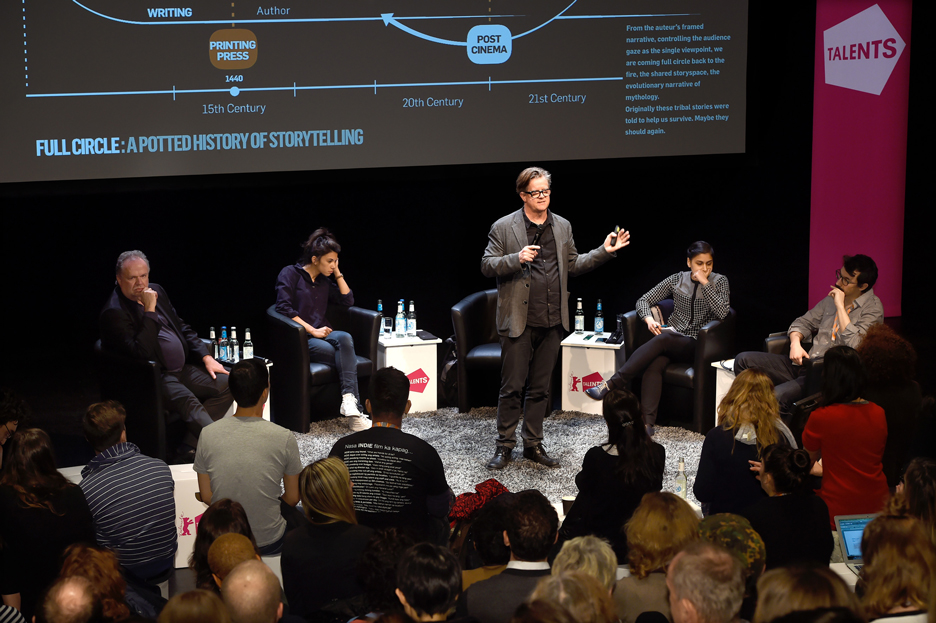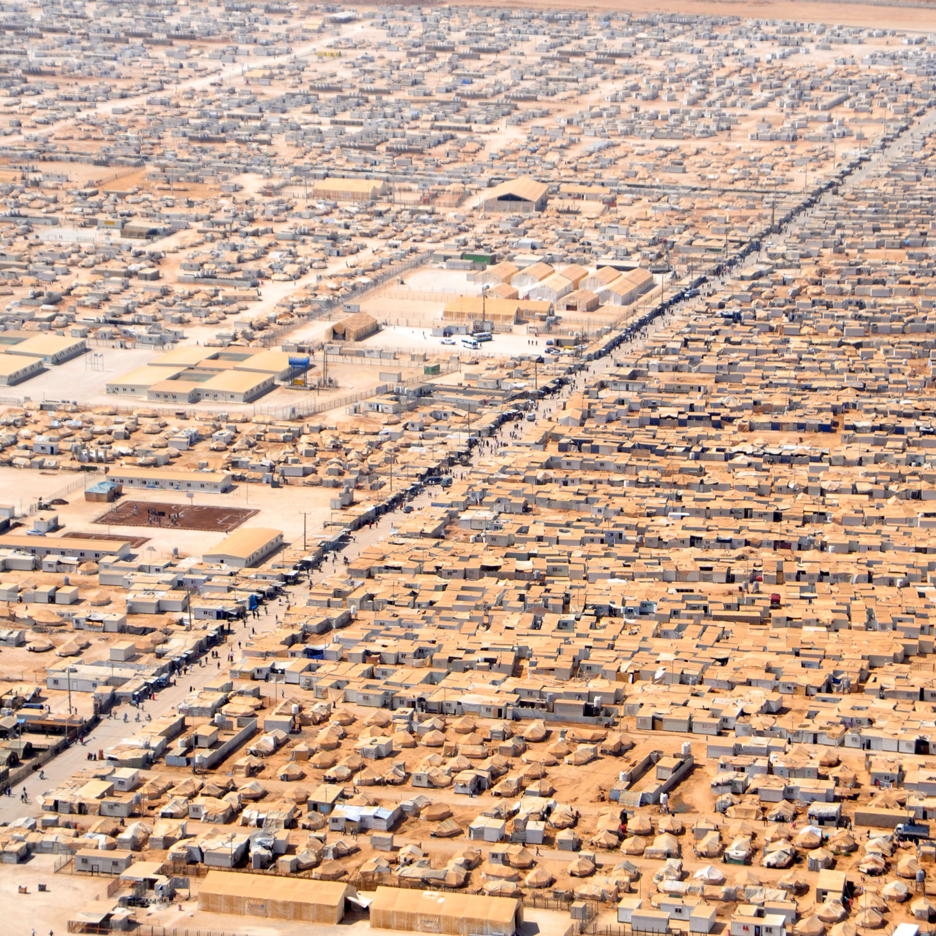Minority Report designer Alex McDowell applies filmmaking techniques to refugee-camp design
A design technique used on feature films including Minority Report, The Terminal and Man of Steel is being applied to the development of future cities in the face of huge refugee migrations.
Production designer Alex McDowell is exploring how the "World Building" technique he developed while working on Hollywood movies could be used to develop sustainable solutions to real-world problems including refugee housing.
The project has attracted the attention of the White House and the UN, who want to make developing solutions to the refugee crisis a priority in the sunset of his presidency.
The World Building technique, which builds conceptual models of situations and then tests them by inserting human "characters" and observing their behaviour, could find solutions missed by the traditional top-down processes led by governments, aid organisations and even architects and designers, McDowell believes.
"World Building is the intersection of design, storytelling and technology," McDowell told Dezeen at the Design Indaba conference in Cape Town. "It's the storytelling part that I think is missing from a lot of the conversations around these real-world issues."
With the World Building approach, "you start with the world and the conditions of the world, and then you get a broad overview and then you run the human narratives through that," the British designer said.
By contrast, the traditional approach to building refugee camps follows a generic model, which is bound to fail, argues McDowell, who heads 5D Global Studio in Los Angeles and teaches at USC School of Cinematic Arts.
"You get massive UN initiatives, hundreds of people in a room talking about it, from a political standpoint, or from a social, or health. You don't hear people actually trying to focus on how do you get [the solution] right."
Earlier this month the World Building Institute organised a series of workshops during the Berlin International Film Festival to apply the methodology to refugee cities.

Titled World Building Migratory Narratives: Envisioning the Future World of the Refugee Camp, the workshops focused on an imagined refugee scenario set 20 years in the future, with rising sea levels in the South Pacific driving millions of people out of their homes and to a vast refugee settlement in Darwin, Australia.
Workshop attendees then developed a range of characters who might find themselves in the settlement, and used their personal narratives to consider ways that inhabitants could collaborate and harness technology to create a permanent community with a vibrant economy.
Workshop attendees included refugee expert Kilian Kleinschmidt, Google's head of VR filmmaking Jessica Brillhart, designer Talia Radford, and Puneet Ahira, an advisor to US president Barack Obama, who is understood to be preparing to launch a personal initiative that will focus on refugees.
Obama's initiative is driven by concern over the ongoing refugee crisis in Europe plus fears of future mass migrations triggered by war, oppression and climate change.
"He's going to launch an initiative that's going to talk about the refugee camp and about the future of refugees," said McDowell.
The workshops are part of a larger, year-long initiative called Spaceship Earth 2036, directed by the World Building Institute in collaboration with the Buckminster Fuller Institute, which will launch at the 2016 Science of Fiction Festival at USC in October. The festival will explore how storytelling techniques can lead to better understanding of issues including rising sea levels, migration and urbanisation.
The impetus for the Berlin workshops came from a Dezeen interview with Kleinschmidt, who stated that "refugee camps are the cities of the future" and pointed out that the average length of a refugee situation is 17 years, suggesting that refugee camps are more akin to permanent settlements than transitory ones.

In the Dezeen interview Kleinschmidt gave a number of anecdotes showing how entrepreneurial refugees can be, and how the solutions they come up with can be better than those imposed by external agencies.
"In Kilian's view, the camp is really the beginning of the city," said McDowell. "If you flip the model, this kind of massive migration of populations is permanent; it's a constant state. So that's the premise. If you take that as the provocation, then how does that change what architecture needs to be? What about services? What about waste management? What does governance look like? How do you stop this being a kind of top-down governance with the UN or a local government coming in and just dictating?"
He added: "How do you allow people to become sustainable, not only in the way they live their lives but actually in how they govern themselves? And how does their culture survive? Because one of the dominant pieces of feedback that we're getting is that people's identities get killed in these camps."
The same problem afflicts the design of cities, McDowell believes. "The problem with those utopic, large-scale architectural visions is that people forget to run human narratives through them," he said. "So if you take Brasilia or Chandigarh, there's always the human missing from that. I think almost by definition architecture does that. It's always going for utopian vision, and assuming humans will work it out later."
McDowell first developed the World Building technique for Minority Report, the 2002 sci-fi movie directed by Steven Spielberg.
McDowell – who was the film's production designer – and his team first designed the futuristic city in which the action takes place and then developed the script by placing fictional characters into the city and predicting how they might react to various situations.
In an interview with Dezeen last year McDowell said that the film "certainly influenced the future" and led to over 100 patents for technologies featured in the movie, including gestural interfaces and voice activation, that were a direct result of using World Building techniques in the film's development process.
McDowell subsequently developed the technique, using it for several more movies and launching the World Building Institute to explore how it could be used in areas beyond filmmaking.
Based at the University of Southern California in Los Angeles, the institute is "founded in the belief that storytelling is the most powerful system for the advancement of human capability" and advocates World Building as a new approach to problem-solving.
"World Building designates a narrative practice in which the design of a world precedes the telling of a story," explains the World Building Institute's website. "The richly detailed world becomes a container for narrative, producing stories that emerge logically and organically from its well-designed core."